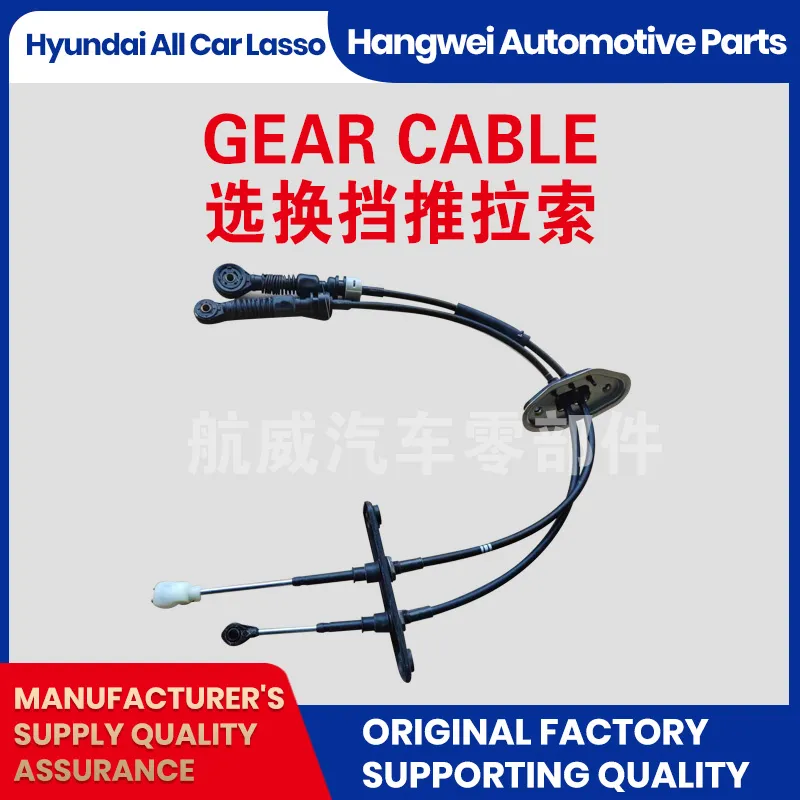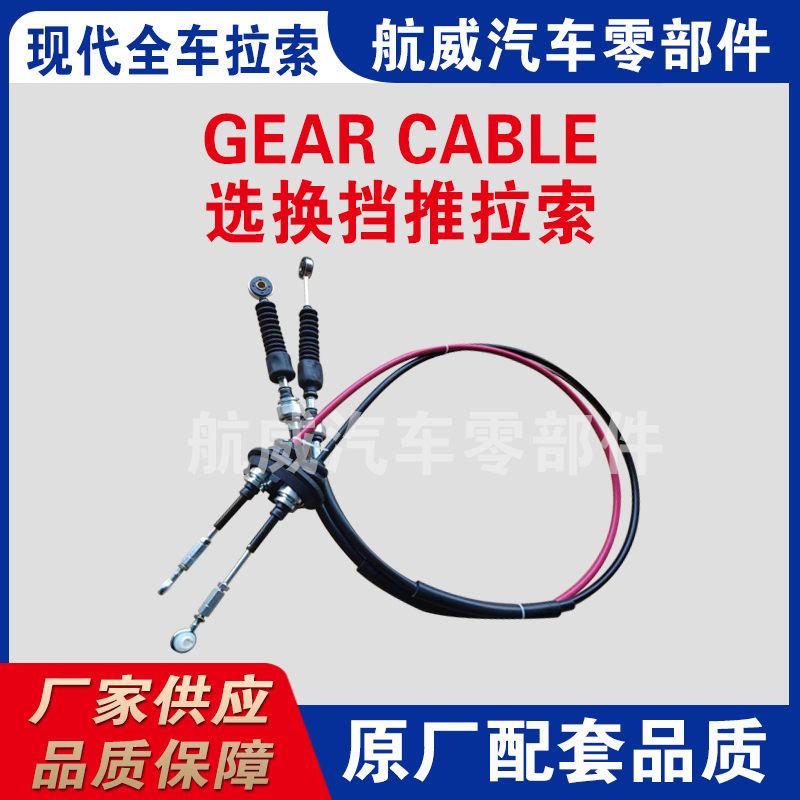High-Quality Gear Cable for Smooth Shifting | Durable & Reliable
Website: https://www.hweicable.com
Email: 56437641@qq.com
Phone: +8613930919999
Address: Qinghe County Minjiang Street South, Wuzhishan Road East
Preface: The Pivotal Role of Gear Cable in Modern Automotive Engineering
Automotive transmission systems have undergone a revolutionary transformation, placing a strong emphasis on improving efficiency, tactile responsiveness, and overall driving comfort. The gear cable—encompassing related products such as gear selector cable, cable gear, gear shift cable, gear cables, gear stick cable, shifter selector cable, shift selector cable, and rear derailleur cable—serves as the backbone for smooth, reliable gear shifting in both manual and automatic vehicles.

In today’s environment, where technological advancement and driving precision are core customer demands, gear cable technology is at the epicenter of research and development, bridging mechanical reliability and digital control with surprising innovation.
Industry Trends & Evolution of Gear Cable Engineering
The automotive cable market is currently valued at over USD 9.5 billion and projected to grow at a CAGR of 5.4% from 2023 to 2030, according to GrandViewResearch [reference]. With the advent of hybrid and electric vehicles—where compactness and lightweight, yet robust, gear shifting mechanisms are vital—the importance of gear cable systems has surged. Industry experts on automotive forums such as SAE International [SAE Papers] consistently report a demand for higher durability, lower friction, better tactile feedback, corrosion resistance, and compatibility with digital control modules, all gradually realized by advances in cable sheath composition and cable core alloys.
The trend leans toward modular gear shift cable solutions, seamless integration with electronic gear selectors, and application-specific customization. Notably, the rear derailleur cable, widely used in both performance automobiles and bicycles, now adopts ultra-fine multi-strand stainless steel for fluid operation under high loads.

Product Highlight: Shift Selector Cable by Qinghe Hangwei Auto Parts Co., LTD.
Shift Selector Cable by Qinghe Hangwei Auto Parts Co., LTD. represents a leap forward in cable gear and gear shift cable technology:
- Innovative & Practical: Utilizes a cutting-edge cable shift design for exceptionally smooth gearing transitions.
- Performance Maximization: The shift selector cable harnesses advanced materials and engineering to elevate shift response and reduce energy loss.
- Quality & Durability: Extensive laboratory testing and rigorous certifications guarantee both longevity and safety.
- Certified & Reliable: Manufactured under strict adherence to global automotive standards, suitable for a vast range of vehicle models.
- Ease of Installation: Designed for simple installation and optimal integration with gear stick cable and cable gear systems.
- User Experience: Allows drivers to truly enjoy driving with confident, effortless gear engagement.
- More Info/Product Purchase: Click here
Key Applications & Use Cases of Gear Cable Systems
Gear cables are essential for facilitating reliable and efficient power transmission between gear selectors, transmission modules, and actuators in diverse vehicles and machinery. Popular applications include:
- Automotive transmission linkages (commercial & passenger vehicles)
- Off-highway and heavy-duty machinery
- Motorcycles & bicycles - especially rear derailleur cable systems
- Special-purpose municipal and industrial vehicles
- Automated hydraulic and pneumatic gear shifter assemblies
Key Technical Parameters of Gear Cable
| Parameter | Typical Value / Range | Industry Standard | Notes |
|---|---|---|---|
| Material (Core) | Stainless Steel / Galvanized Steel / Alloy | ASTM A1023, ISO 6931 | Corrosion Resistance Critical |
| Outer Sheath Material | HDPE, PTFE, PA12, PVC | GB/T 3189, ISO 3866 | Temperature & Wear Resistant |
| Cable Diameter | 2.8mm - 6.5mm | OEM Specific | High Torsional Rigidity at Lower Sizes |
| Minimum Bend Radius | 40mm - 130mm | ISO 2408 | Flexibility versus Strength Trade-Off |
| Breaking Load | 700-2800N (customizable) | OEM Standard/ISO 2408 | Impact Failure Test Proven |
| Surface Friction Coefficient | <=0.05 | ASTM D1894 | Low-Friction for Smooth Shift |
| Operating Temperature | -40°C to 120°C | ISO 15500-9 | Resistance to Freezing/Overheating |
| Certifications | TS16949, ISO9001 | Global Industry Standard | Mandatory for OEM Supply |
Data Visualization: Gear Cable Parameter Trends
Shift Selector Cable – Key Metrics & Visual Analytics
Professional FAQ: Gear Cable Solutions
A: Premium gear cable systems employ multi-strand stainless steel or alloy wires for the core, offering superior tensile strength and corrosion resistance. For the sheath, high-density polyethylene (HDPE), PA12, or PTFE liners are standard, minimizing friction and wear (see Bike Forums).
A: The breaking load is the maximum force the cable can withstand without structural failure. Shift selector cables like our Shift Selector Cable from Qinghe Hangwei Auto Parts Co., LTD. are typically rated above 1800N, verified under ISO 2408.
A: Diameters commonly range from 2.8mm to 6.5mm. Selection hinges on vehicle type and mechanical load requirements—sports models favor lower diameter for lower inertia, while heavy vehicles select higher diameters for durability.
A: Installation must ensure:
- Minimum bend radius compliance (typically >50mm)
- Secure terminal locking and corrosion-protected end-caps
- No contact with sharp or hot engine parts
A: Contemporary cables receive PTFE or polyamide coatings on the inner wire, drastically lowering friction coefficients to ≤0.045, even in harsh environments.
A: Multiple testing cycles replicate real-world shift scenarios: salt spray, torsion, and high/low temperature exposure. This ensures longevity and shift precision, especially in the rear derailleur cable where micro-movements are critical (CycleChat Discussion).
A: International standards such as ISO/TS 16949 and ISO 9001 are required to ensure manufacturing traceability, process stability, and consistent cable quality.
Why Choose Qinghe Hangwei Auto Parts Co., LTD.?
Qinghe Hangwei Auto Parts Co., LTD. delivers gear cable and shift selector cable solutions trusted by OEMs and aftermarket clients worldwide. Their advanced R&D, state-of-the-art materials, and ISO-certified production guarantee professional-grade products with superior performance. Their distinguished customer support and supply chain reliability further solidify their authority in the field.
- Gear Cable customization and consultation
- OEM and after-sales inquiries for gear shift cable solutions
- Bulk and special orders (56437641@qq.com)
References & Professional Reading
- Grand View Research: Automotive Cable Market Analysis
- SAE International: Technical Papers - Transmission & Cables
- Bike Forums: Best Cables & Housing Discussion
- CycleChat: Internal Gear Cable Longevity
- SAE J1711 Standard: Hybrid and Electric Vehicle Shift Cable Standards
- ISO/TS16949 Reference: Automotive Quality Management
- Qinghe Hangwei Product: Shift Selector Cable Details
-
Clutch Line: Braided, Leak-Proof, OEM-Grade PerformanceNewsNov.10,2025
-
Throttle Cable: Durable, Smooth Control & Universal FitNewsNov.10,2025
-
Throttle Cable: Durable, Smooth, Universal Fit, Easy InstallNewsNov.10,2025
-
Clutch Line: Durable, Leak-Proof, OEM-Grade PerformanceNewsNov.10,2025
-
Hand Brake Cable | Custom, Universal & Trailer SolutionsNewsNov.10,2025
-
Clutch Line: High-Pressure, OEM-Fit, Corrosion-ResistantNewsNov.03,2025
